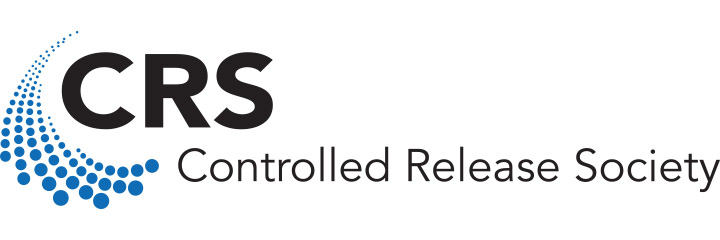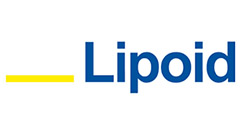Scientific Program
- Wednesday 26th January
- Thursday 27th January
- Friday 28th January
Time: Western European Time (Canary Islands local time)
Wednesday 26th January
| 09.00 – 09.30 | Welcome Ceremony Vice-rector of the University of La Laguna (ULL) Ben Boyd (CRS President) Carmen Évora (SPLC-CRS President) Bruno Sarmento (SPLC-CRS Vice president) |
| 09.30 – 10.15 | PLENARY LECTURE 1 Ben Boyd University of Copenhagen, Denmark, and Monash University, Australia. “Metabolic labelling as a potential new approach to localised drug delivery” Moderator: María Jesús Vicent (Príncipe Felipe Research Center, Valencia) |
SESSION 1. Technological Tools in Advanced Drug Delivery Systems
Moderator: Bruno Sarmento. University of Porto
| 10.15 – 10.45 | Invited speaker Nuno Azevedo Laboratory for Process Engineering, Environment, Biotechnology and Energy (LEPABE). Faculty of Engineering. University of Porto. Portugal. “Delivery of nucleic acid mimics into bacteria” |
| 10.45 – 11.45 | Short talks (10 min + 5 min questions) “Protamine nanoparticles as non-viral vectors for gene-delivery in the treatment of glioblastoma” |
| 11.45 – 12.15 | Break |
| 12.15 – 13.30 | Posters Session (2-3 min each + 10-15 min for questions) Optimization of PLGA/PEI nanoparticles covered with poly(I:C) for cancer immunotherapy. Amoebicidal Effect of Pitavastatin Nanoparticles in Acanthamoeba castellani Neff. Cell-free synthesis of Ebola virus matrix protein VP40 Virus-like particles. Chamomilla pollen microcapsules as multistep delivery systems. Gone with the Waste – Quantification of the exact composition of polymeric nanocapsules. Infliximab microencapsulation by Coaxial Ultrasonic Atomization preserves its biological activity: in vitro evaluation. Carvacrol-loaded microcapsules by a coaxial method for varroosis control. Effective parameters on their production. Mucoadhesive buccal formulations based on lyophilized liposomes: application to sildenafil citrate. Development and study of liposomal formulation for nail administration of cyclopirox. Development of a liposomal formulation containing Cyclosporin A for the treatment of dry eye disease. Budesonide microparticles for ocular administration.
|
| 13.30 – 15.00 | Time for Lunch |
| 15.00 – 16.25 | Posters Session (2-3 min each + 10-15 min for questions) New treatment for fungal keratitis: A combined eye drops of two antifungals. Bevacizumab-loaded PLGA intravitreal implants prepared by supercritical fluid technology. Bevacizumab loaded lipidic lyotropic liquid crystals as a promising platform for ocular diseases. Development of surface-modified lipid-polymer hybrid nanoparticles: bulk formulation vs microfluidics. Microfluidics for precise tuning of cubosome nanoparticle size. Characterization and in vivo evaluation of quercetin-loaded zein nanoparticles. A Nanotechnology-based Immunotherapeutic Strategy Against KRAS mutated Colorectal Adenocarcinoma. Self-Illuminating Biocompatible Nanosystems can Induce Apoptosis Via Photodynamic Therapy (PDT). Evaluation of Eudragit S100 Nanofibers as pH responsive antimicrobial release system. Nucleic acid based medicinal products for Fabry disease: critical formulation factors to ensure effective delivery. Fluorescence Cross-Correlation Spectroscopy reveals extent of association between liposomes and DNA and the number of DNA molecules per lipid nanoparticle. DOSY as an Alternative Technique to Monitor the Degradation of Polypeptide-Based Drug Delivery Systems.
|
| 16.25 – 17.00 | PhD Thesis Award sponsored by Bial Moderator: Rocío Herrero (University Complutense de Madrid) |
| 17.00 – 18.00 | Interactive Session with Prof. Jesús Santamaría. University of Zaragoza. “A PhD degree and Beyond. Thoughts for early-career researchers” |
Time: Western European Time (Canary Islands local time)
Thursday 27th January
| 09.00 – 09.45 | PLENARY LECTURE 2 Moderator: María Blanco (University of Navarra) |
SESSION 2. Biomimetic Structures for Diagnosis and Therapy
Moderator: Susana Simões. Centre for Innovative Biomedicine and Biotechnology (CBB). University of Coimbra
| 09.45 – 10.15 | Invited speaker Pieter Vader CDL Research and Department of Experimental Cardiology. University Medical Center (UCM) Utrecht. Netherlands. “Extracellular vesicle-mediated RNA delivery: From mechanistic insights to therapeutic applications” |
| 10.15 – 11.15 | Short Talks (10 min + 5 min questions) “Functionalization of a meniscus prosthesis with polymeric coatings for the sustained release of anti-inflammatory drugs” |
| 11.15 – 11.30 | Posters Session (2-3 min each + 5 min for questions) In vitro production, isolation and characterization of Ebola virus-like particles. Self-assembling dendrimer for the delivery of antisense NAMs into bacteria. Transtympanic delivery of the pneumoccal endolysin MSlys via PEGylated liposomes. |
| 11.30 – 12.00 | Break |
SESSION 3. Innovative Strategies for Drug Targeting
Moderator: Helena Florindo. University of Lisbon
| 12.00 – 12.30 | Invited speaker Jesús Santamaría Department of Chemical and Environmental Engineering. Instituto de Nanociencia y Materiales de Aragon (INMA). University of Zaragoza “Extracellular vesicles as selective vectors for delivery of nanomaterials to tumors” |
| 12.30 – 13.45 | Short Talks (10 min + 5 min questions) “Lipid-based non viral gene therapy for Fabry disease:Ex vivo and in vivo evaluation” |
| 13.45 – 15.15 | Time for Lunch |
| 15.15 – 16.20 | Posters Session (2-3 min each + 10-15 min for questions) Ultraflexible lipid vesicles allow in vitro skin permeability of Cyanocobalamin: a potential treatment for Vitamin B12 deficiency. Targeted cathelicidin nanomedicines as novel glucoregulator for diabetes therapy Preclinical basis of nanostructured lipid carriers (NLC) loaded with aflibercept: design, development and characterization. Infliximab-loaded PLGA nanoparticles: design, development, and physicochemical characterization. Inulin-PCL nanoparticles as an adjuvant delivery system for highly purified recombinant antigens. Using polypeptide-based nanoconjugates as mitochondrially-targeted drug delivery platforms. Cannabinoid-loaded receptor-targeted nanoparticles improve anticancer activity through delayed cell internalization. 3D printed tacrolimus suppositories for the treatment of ulcerative colitis.
|
| 16.20 – 17.25 | Posters Session (2-3 min each + 10-15 min for questions) Development of shear-responsive microaggregates based on PLGA nanoparticles for targeted delivery. Lipid-polymeric hybrid nanoparticles funcionalized with a specific aptamer: cellular uptake and citotocicity. Organs toxicity of oligonucleotide aptamer-lipid-polymer nanoparticles for osteoporosis. Immunotoxicological properties of yeast-derived glucan particles. The influence of curcumin-encapsulated glucan nanoparticles on oxidative stress in liver cells. Preparation, characterization and efficacy of polylactide glycolide-chitosan nanoparticles loaded with Curcuma. Polymeric nanoparticles loaded anti-viral peptide efficiently inhibits SARS-CoV-2. Magnetic Targeting of a Novel Hybrid Nanosystem for Antitumoral Activity Enhancement.
|
Time: Western European Time (Canary Islands local time)
Friday 28th January
| 09.00 – 09.45 | PLENARY LECTURE 3 Moderator: Carmen Álvarez (University of Santiago de Compostela) |
SESSION 4. Hydrogels and 3D Models for Drug Delivery Systems
Moderator: Patricia Díaz-Rodríguez. University of Santiago de Compostela
| 09.45 – 11.00 | Short Talks (10 min + 5 min questions) “Biocompatible Injectable Smart Hydrogels-based Depot Systems: A Dual-Anticancer Drug Sustained Release Strategy” |
| 11.00 – 11.30 | Break |
| 11.30 – 12.30 | Posters Session (2-3 min each + 10-15 min for questions) Carboxymethyl cellulose-based 3D scaffolds for wound healing. Gelatin hydrofilms with bioactive compounds Aloe vera and EGF for chronic wound healing applications. A novel sumecton enriched gelatin-based scaffold for bone regeneration. Extracellular vesicle-loaded hydrogel for stimulating cardiac repair after myocardial infarction. Novel injectable thermosensitive hydrogel containing chitosan-dextran sulphate nanoparticles for antigen delivery. Functionalized hyaluronic acid-based hydrogel for ophthalmic application. Preliminary studies. Mucoadhesive nanoparticles for ocular delivery of ketorolac. Licensing hydrogels maintain the immunomodulatory phenotype of human mesenchymal stromal cells in a murine colitis model.
|
SESSION 5. Young Scientist Networking
Moderators: Cláudia Martins (Univ. Porto), Souhaila El Moukhtari (Univ. Navarra), Mireya L. Borrajo (Univ. Santiago de Compostela) and Patricia García-García (Univ. La Laguna).
| 12.30 – 13.30 | Short Talks (7 min + 3 min questions) “Exploiting the chemotherapeutic and immunomodulatory effect of brain and glioblastoma dual-targeted nanoparticles – a nanomedicine, chemistry and tumor biology therapeutic recipe making use of a novel tumor niche-recapitulating 3D spheroid construct” |
| 13.30 – 15.00 | Time for Lunch |
FINAL SESSION. Discussion: Positive-negative aspects of brain targeted drug delivery systems
| 15.00 – 16.00 | Jose Luis Lanciego vs Meritxell Teixidó Jose L. Lanciego Meritxell Teixidó Moderator: M.J. Alonso (University of Santiago de Compostela) |
| 16.00 – 16.30 | Awards for the best oral communication and poster. Closing ceremony |
| 16.30 – 17.30 | General Assembly of the SPLC-CRS |







